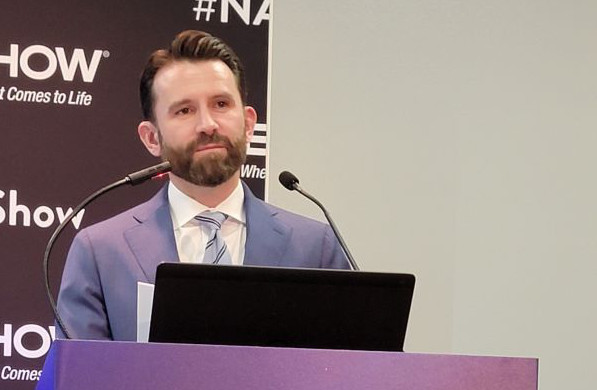NextGen TV: America’s Global Leadership Opportunity to Improve Alerting
ATSC 3.0 has given us a powerful tool to improve emergency alerts

Deadly flooding in Germany and China, catastrophic wildfires in Greece and Turkey, and record typhoons in East Asia and India are all-too familiar to Americans coping with catastrophic wildfires, recurring tornadoes, and chronic flash floods. Reports of alerting failures from these danger zones were familiar as well. As usual, the need to improve alerting, both the technical delivery and the effectiveness of the alert messaging itself, is quickly forgotten – until disaster strikes again.
Fortunately, we now have the opportunity to break this deadly cycle, and it’s time we seized it. Here are four realities that must drive action:
1. Relying on wireless alone is a recipe for disaster.
Mobile alerting systems, such as Wireless Emergency Alerts, or “WEAs” in the U.S., and systems used in Germany and elsewhere, have major benefits. They also have major vulnerabilities. For one, they usually provide limited information, just a few words or characters.
Perhaps the most dangerous vulnerability of wireless alerting generally is the unreliability of wireless networks. Cellular networks fail when power is cut or when towers literally burn up in forest fires. Whatever cellular infrastructure remains often becomes congested as first responders transmit and receive information, those in danger call for help, and survivors try to reach loved ones.
2. “Rich media” and research into using it are essential.
Government-funded research into the effectiveness of short message alerts delivered to mobile phones, such as WEA’s, revealed a major shortcoming. The paucity of information leads to the phenomenon of “milling.” Coined by the late Dr. Denis Mileti, milling describes the delay in taking protective action while alert recipients, often in denial, search for confirmation and more information. As many reports from Germany and the U.S. have described, the delay can be fatal.
Based on the concept of milling, it’s likely that if the alert contains images, live video, flood maps, escape routes, and/or other “rich media,” people are more likely to grasp the danger and act more quickly. But there is surprisingly little research into how best to structure and present longer-form alerts. In many ways, the challenges to improve alerting are as much about social science as they are technology.
3. Geo-targeting is needed to overcome the biggest alerting problem.
More than any other factor, over-alerting is the biggest problem with alerting today. If people receive false alarms or alerts intended for people in other areas, they become desensitized to them. Filings at the FCC by emergency managers to improve WEA’s over the years have focused on geo-targeting even more than richer information as their top priority. Location awareness and geo-fencing technologies are used in countless consumer applications. It’s time to build this tech into alerting systems.
4. The U.S. can – and should – lead globally for improvements
As the U.S. aspires to return to global leadership in climate change resilience, better alerting and crisis communications must be part of the toolkit. Fortunately, the ATSC 3.0 broadcasting standard was explicitly designed to support advanced alerting and post-alert recovery information. Its development and deployment in the U.S. and South Korea place both of our countries at the vanguard for alerting, and we should explore a bi-lateral global initiative.
In early 2020, the NAB commissioned an exploratory study by the AWARN Alliance with colleagues in Europe and Japan on alerting interoperability. There was agreement that the “all-IP” ATSC 3.0 can provide a common application layer to improve alerting in many countries, even if they use other digital transmission standards. True integration may never be feasible, or even desirable, but interoperability can be achieved and offers many advantages. A webinar, Global Harmonization for Advanced Emergency Alerting: ATSC 3.0, DVB, and ISBD, was produced with the study for NAB Show Express 2020.
Along with an exploration of ATSC 3.0 for better alerting, a multi-national initiative into the behavioral science of alerting could produce great benefits for people of all countries. Along with cultural differences, there surely are universal human behaviors that provide a baseline for concerted action. Developing and consumer-testing common symbols for hazards, for example, would be a major step forward.
We have to face the climate crisis together as fellow inhabitants of our planet. ATSC 3.0 has given us a powerful tool to do that. Governments, NGO’s, and private industry have to step up. Embracing NextGen TV and next generation emergency messaging at home would be the first step toward global leadership.
Get the TV Tech Newsletter
The professional video industry's #1 source for news, trends and product and tech information. Sign up below.
John M. Lawson is president of Convergence Services, Inc. and Executive Director of the Advanced Warning and Response Network (AWARN) Alliance.

